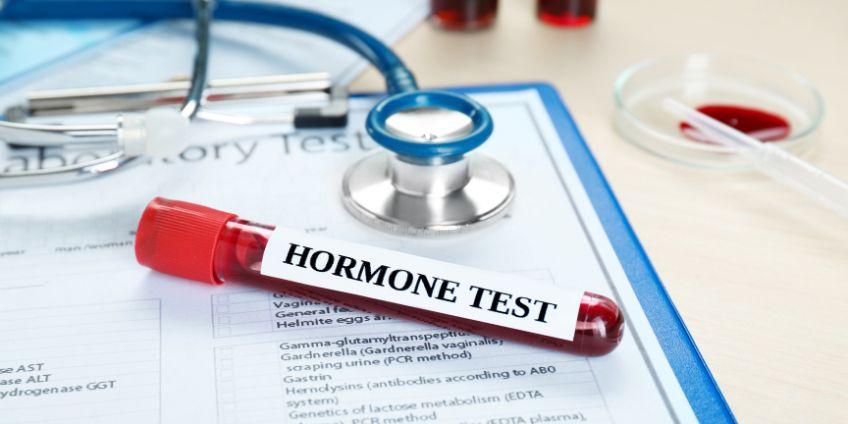A responsible BHRT plan starts with a careful health history and risk screen, then uses targeted lab tests to guide treatment and monitoring. Common baseline labs may include a complete blood count (CBC), comprehensive metabolic panel (CMP), thyroid panel (TSH ± free T4/free T3), lipid panel, fasting glucose/insulin or A1C, and – when clinically indicated – sex-hormone markers (e.g., estradiol, progesterone, total/free testosterone, sex hormone–binding globulin SHBG). Your provider should explain why each test matters, how often to re-check, and what would trigger a dose change. We offer testing and follow-up plans tailored to your history and goals.
Key Points
- Start with safety: A thorough intake + risk assessment comes first; labs are chosen based on your history, symptoms, and goals – not a one-size-fits-all panel.
- Baseline labs (common): CBC, CMP, full thyroid panel (TSH ± free T4/free T3), lipids, fasting glucose/A1C ± fasting insulin to assess general health and cardiometabolic risk.
- Hormone markers (as indicated): Estradiol (E2), progesterone (P4), total/free testosterone, SHBG; DHEA-S. Timing of blood draws depends on menstrual status and route of therapy.
- Follow-up timing: Reassess symptoms and labs typically 6–12 weeks after changes, then every 6–12 months once stable (cadence varies by history and route).
- Route matters: Transdermal estradiol can affect labs differently than oral; oral estrogens may raise triglycerides and SHBG – your provider should account for this.
- Beyond bloodwork: Depending on history, consider mammography, cervical screening, bone density (DEXA), and blood pressure/weight tracking per standard guidelines.
Hormone Testing Before Prescribing BHRT
BHRT (bioidentical hormone replacement therapy) isn’t just about numbers on a lab report. Good care begins with a comprehensive intake (medical and family history, medications, prior hormone use, clot risk, cancer history, migraines with aura, liver disease, etc.). Your provider uses that information to decide which labs are appropriate (including blood, urine, and saliva panels) and how to interpret them alongside your symptoms and goals.
Bioidentical options include estradiol and micronized progesterone, and sometimes testosterone (the latter is individualized and off-label for many indications). Exact test choices and timing depend on whether you are premenopausal/perimenopausal or postmenopausal, and whether therapy is oral, transdermal (patch/gel), or vaginal.
How Providers Typically Build A Testing Plan
1) Safety & general health screening
These testing values from blood work help rule out issues that could change the BHRT plan or require further evaluation:
- CBC (anemia, infection clues), CMP (electrolytes, kidney and liver function)
- Lipid panel (cholesterol, triglycerides)
- Glucose/A1C ± fasting insulin (glycemic status/insulin resistance)
- Blood pressure, BMI/weight trends (cardiometabolic risk factors)
Why it matters: Understanding your baseline helps choose the route (e.g., transdermal vs oral estradiol) and guides risk counseling.
2) Thyroid status (if symptoms or history suggest)
- TSH, often with free T4 and sometimes free T3
Why it matters: Thyroid symptoms often overlap with menopausal symptoms (fatigue, weight, hair/skin changes). Treating thyroid issues may improve how you feel – separate from BHRT.
3) Sex-hormone markers (when clinically indicated)
- Estradiol (E2) and progesterone (P4) context; total and/or free testosterone; SHBG; sometimes DHEA-S
- Timing depends on cycle status and therapy route. For example, in perimenopause, clinicians may interpret estradiol/progesterone cautiously due to variability; in postmenopause, estradiol levels are low without therapy, and transdermal vs oral routes influence measured values.
Important: Symptoms + safety guide therapy; labs support, but do not replace, clinical judgment.
4) Imaging and preventive screenings (per guidelines)
- Mammography and cervical screening as age-appropriate
- Bone density (DEXA) if indicated (e.g., risk for osteoporosis)
- Other tests as recommended by your primary or specialty clinicians
Follow-Up: When To Re-Check
After starting or changing therapy, providers often schedule a check-in at 6–12 weeks to review symptoms, side effects, blood pressure, and selected labs (when relevant). Once you’re stable, 6–12-month reviews are typical, with sooner visits if symptoms change.
What might prompt a dose/route change?
- Persistent side effects (e.g., breast tenderness, spotting, headaches, skin irritation with topicals)
- Blood pressure or lipids trending unfavorably
- Inadequate symptom relief despite adequate time on a dose
- New or evolving risk factors (e.g., clotting risk, migraines with aura)
Route considerations: Transdermal estradiol may be preferred in some patients due to lower first-pass hepatic effects than oral; oral estrogen can increase triglycerides and SHBG, which may influence interpretation of free testosterone.
Advanced Hormone Testing (Optional Tools)
In some cases, your provider may consider urine metabolite testing (e.g., DUTCH®) to look at how your body processes and clears hormones – including estrogen metabolism pathways – and saliva testing to assess daily cortisol patterns (morning peak, afternoon dip, evening wind-down). These tools can add context when symptoms don’t match basic labs, when sleep/stress issues are front and center, or when you’ve had side effects on prior regimens.
They’re not stand-alone diagnostics and shouldn’t replace a careful history, exam, or standard bloodwork; results are interpreted in combination with symptoms, medications, and the route of therapy (oral vs transdermal can affect readings). Not everyone needs these tests, and insurance coverage varies – your clinician should explain what decisions might change based on the results (e.g., dose, route, timing, nutrition/lifestyle supports) before you invest. If used, they’re part of a shared decision-making plan focused on safety, symptom relief, and clear follow-up.
Is Testing Right For You (And How Much Do You Need)?
Testing is individualized. Some patients benefit from a leaner testing strategy focused on symptoms and safety markers; others – based on history or complex symptoms – may need closer lab follow-up. Your provider should explain why each test is useful, what changes would be made based on results, and how often you’ll be re-checked.
Ask clinics to walk you through their testing philosophy: how they balance symptoms, risks, and labs, and what tools they use (e.g., questionnaires, lab timing guidance, shared decision-making).
Safety, Side Effects & When To Seek Care
Common BHRT side effects can include breast tenderness, bloating, headaches, skin irritation (topicals), mood shifts, or spotting/irregular bleeding early in therapy. These often improve with dose or route adjustments.
Call the clinic for persistent or worsening side effects, or unexpected bleeding after the first few months on therapy.
Seek urgent care immediately for chest pain, shortness of breath, severe headache or vision changes, one-sided weakness/numbness, calf pain/swelling, or heavy vaginal bleeding – these can signal serious complications.
Next steps
We practice responsible BHRT informed by testing – with individualized plans, shared decision-making, and telehealth options when appropriate. We’ll help you understand which labs are right for you, how often to re-check, and how results guide safer dosing.
- Ready to talk it through? Book a discovery call
Sources:
- North American Menopause Society (NAMS). The 2022 Hormone Therapy Position Statement.
- Endocrine Society. Compounded Bioidentical Hormone Therapy Scientific Statement.
- ACOG. Compounded Bioidentical Menopausal Hormone Therapy (Clinical Consensus, 2023).NIH/NCBI. Menopausal Hormone Therapy—risks and benefits overview.
- NIH/NCBI. Menopausal Hormone Therapy—risks and benefits overview.






0 Comments